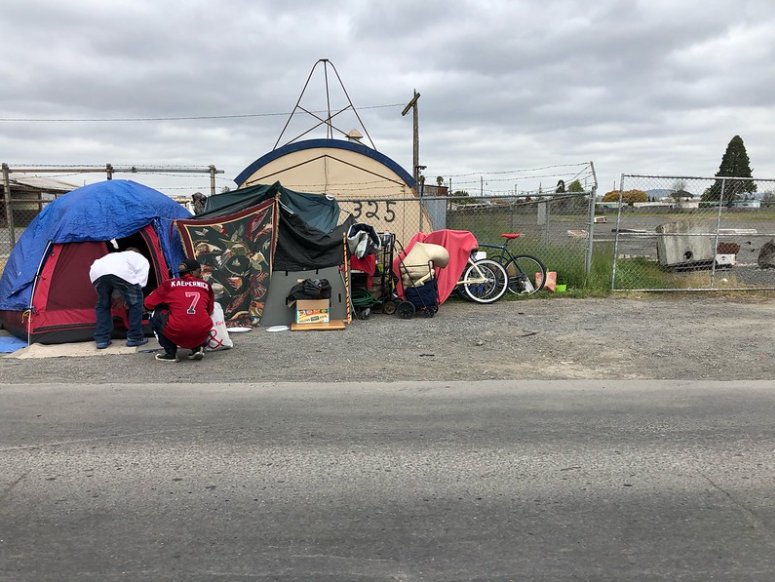Rohnert Park’s city council met last Tuesday, Sept. 14 at 2:30 p.m. to discuss the city’s options for long- and short-term housing. The meeting was held after a homeless encampment in Roberts Lake Park and Ride’s parking lot was cleared out by the city on Sept. 9 and 10 after receiving complaints from nearby residents.
KSRO, Sonoma County’s FM News Talk, reported, “The camp came to the attention of city officials in late August when the camp was attracting dozens of homeless residents, around 20 tents, and 10 vehicles.”
The site was cleared, and a fence was put up as all those who had been living there were located to other shelters. As Rohnert Park has yet to establish its own homeless shelter or short-term housing, the city had to work with shelters in Santa Rosa, Petaluma, and other cities in the county to find shelter for the dozens of people evacuated.
The city posted a statement about the evacuation to their website on Sept. 9 that read, “The site poses health and safety risks due to its proximity and access to the SMART tracks and crossing. In the past two years, there have been five deaths at that crossing, including two individuals who were experiencing homelessness. For this reason, the city will be closing the site to all public access.”
Tuesday’s city council meeting was just the first step in deciding on short-term and permanent housing solutions.
The executive summary from the meeting’s agenda report stated, “We are at a unique point in time where the alignment of state and federal funding sources present an opportunity to make meaningful progress in housing the unhoused in Rohnert Park. Developing housing in Rohnert Park for the unhoused will make our community more resilient, better support all of our residents, and aligns with the Council’s strategic priority of helping the unhoused. We need additional staff resources to ensure the health and safety of the community while we simultaneously work toward permanent solutions.”
The council meeting was open to the public and those unable to attend were encouraged to send their comments and opinions via email. Over 100 residents showed up at the meeting, many of them in opposition to any city-owned sites being used for a homeless shelter, with some going as far as to show up to the meeting early with signs to protest the idea outside the council chambers.
City resident Juanita G. Tlahuitzu expressed her frustration over those protesting in a Facebook comment that read, “I live nearby Rohnert Park city hall and I was truly disappointed as I passed by and saw signs that said ‘not in Rohnert Park’. I was homeless just over a year ago, with three children…It saddens me that ‘neighbors’ are desensitized to the hurt of others, the fact that people are out of options and part of the problem is the same ‘not in my backyard attitude.’ I’m glad to read that despite the attitude of the community, Rohnert Park is making an effort to help the most vulnerable of its community.”
Other residents voiced their support for a local shelter both in person and in email and voiced their ideas for potential solutions.
Adrienne Lauby wrote in an email to the city council, which she re-posted on Facebook, “The problems street encampments pose to municipalities have been exacerbated by the COVID-19 pandemic, which has added a pressing urgency to the need for addressing health and safety needs of Sonoma’s homeless population. Apportioning funds to meet this urgency by calling for and funding a carefully maintained, non-congregate emergency shelter will help to protect the health of shelter residents and residents in surrounding neighborhoods. Safe Parking Villages can be quickly assembled to provide safe, basic shelter for its residents and stable access for public health officials and health workers to test, quarantine and treat infections among the residents.”
The meeting concluded with council members deciding that more research needs to be conducted and more options needed to be considered before a conclusion could be made. A follow-up meeting has already been scheduled for Tuesday, Sept. 28 and will once again be open to the public.





![[Both photos courtesy of sonoma.edu]
Ming-Ting Mike Lee stepped in as the new SSU president following Sakakis resignation in July 2022](https://sonomastatestar.com/wp-content/uploads/2024/04/CC4520AB-22A7-41B2-9F6F-2A2D5F76A28C-1200x1200.jpeg)


























